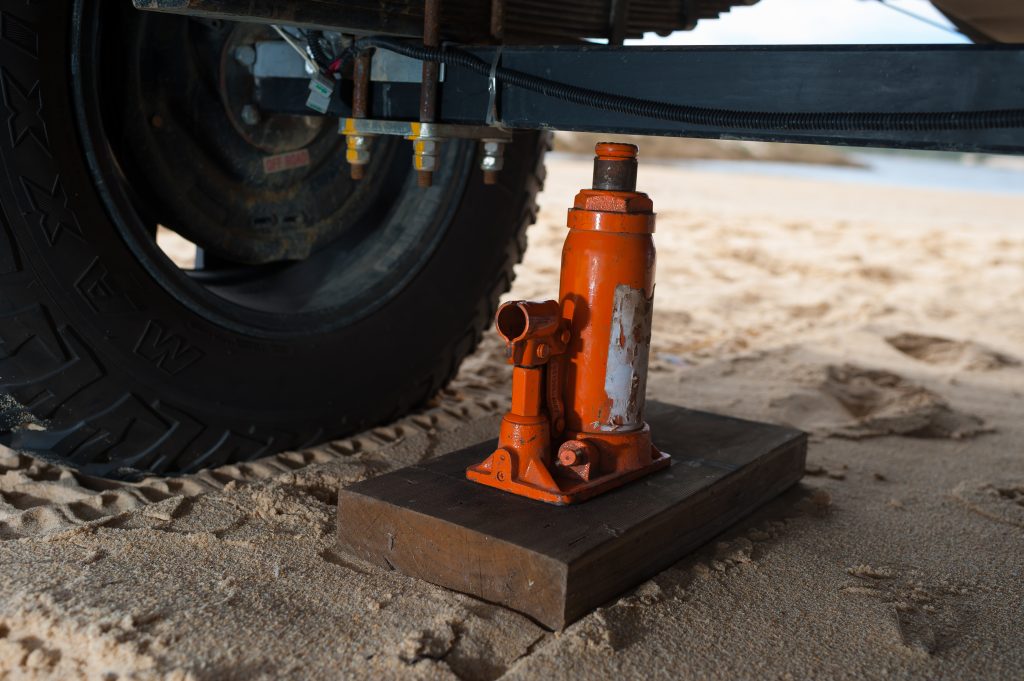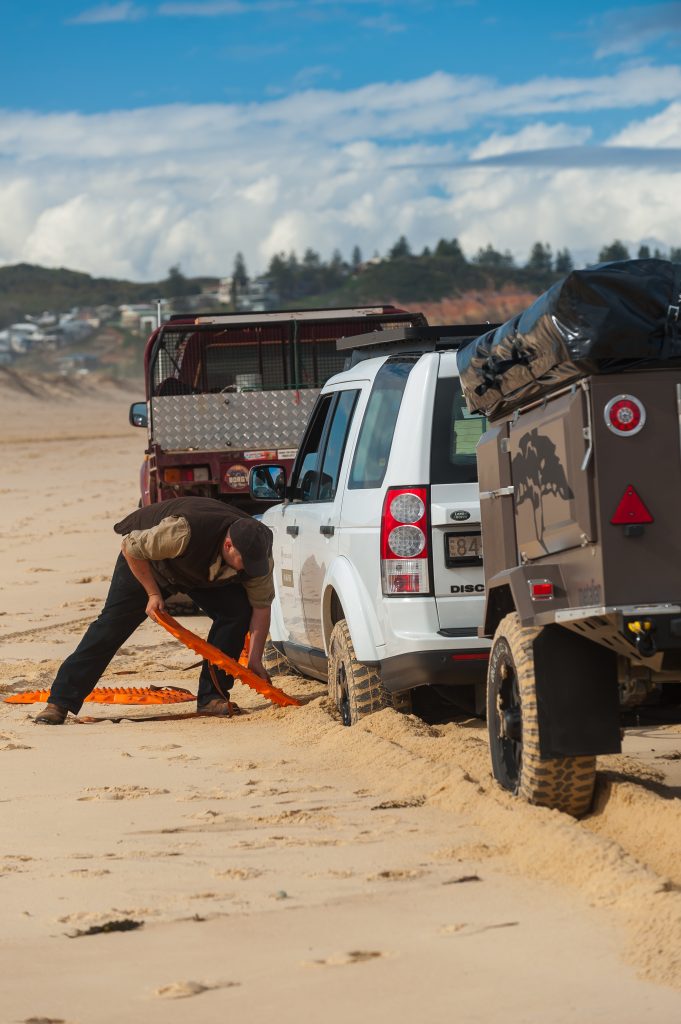
Beaches are great places and Australia, being an island, is literally ringed with some of the best in the world. It makes sense then that we’ve made going to the beach an art form. We surf the waves, catch and sometimes eat the fish that swim just offshore and are probably the best there is at judging rips and treacherous conditions. Every Australian knows to swim between the flags.
But does every Australian know how to rescue their rig from a sandy bog before that alkaline hell, saltwater, moves up during high-tide to swamp everything — rig, gear, the whole lot?
If you like getting away to stretches of sand far away from services or from the likelihood of another vehicle coming along to assist, well you really must learn some skills so you can not only rescue the situation should you encounter it, but also travel out onto remote beaches with confidence.


Use the shovel to dig forwards-facing channels that gradually approach the surface of the sand your wheels can follow. You can bed the bottoms of these channels with small branches and twigs to aid wheel traction.

If this doesn’t work, get out your jack, place the base plate underneath it, jack the wheels a bit and then pack the underneath with small branches and twigs before lowering. Now your wheels have some traction directly underneath and well as on the path upwards in the channels you’ve dug.
Of course, your tyres should be nicely deflated (around the 20psi mark) to increase tyre surface area on the twig and branch bed.
If still bogged, look around and assess the likelihood of someone coming to help. Have the snatch strap ready in case.
If all fails, use your UHF radio to request assistance. Keep digging and trying different materials as traction-friendly channel-bed lining.

Practise makes perfect. Next time you’re with a group of mates at a beach with your vehicles, get deliberately bogged and experiment with different rescue techniques until you’ve settled on a way the works best for you and your rig.
Make sure the gear you’ve got that’ll help if ever you’re bogged remotely without assistance is well-maintained and of decent quality. A broken shovel handle, for example, could be disastrous! Driftwood makes a crap handle!
At Mars Campers we work hard to develop the best value for money camper trailers with a view of helping you create memorable experiences with your loved ones.
Did you find this information useful? If you found even one tiny nugget in this material to be useful, please do forward it to one of your friends. I am sure they will thank you for it. You can send it to them via email, Twitter, Facebook or post it on your own website.